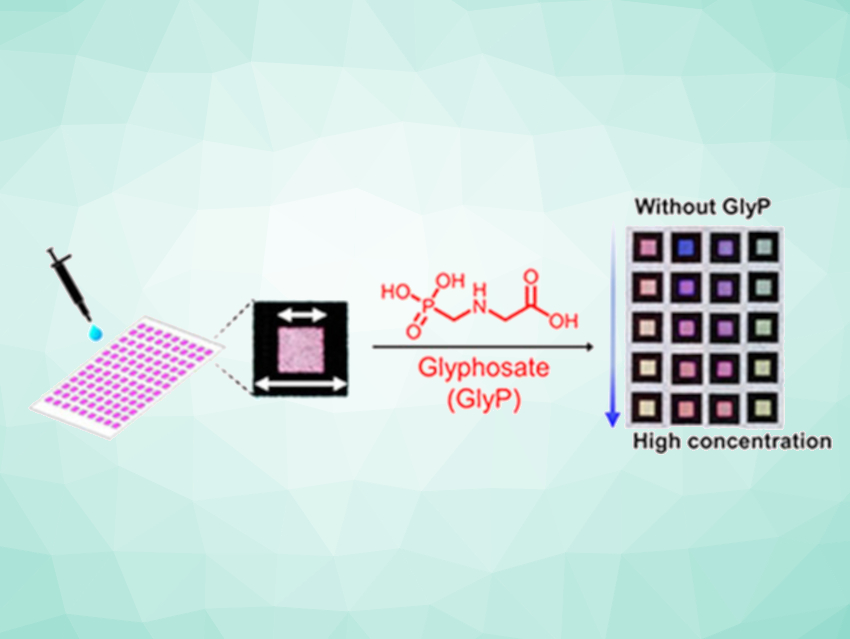Anions play crucial roles in nature, which makes improved anion sensors interesting research targets. The herbicide glyphosate, for example, is an oxyanion whose quantification is important to prevent possible harmful effects on human health and the environment. Conventional anion sensors often require large spectrophotometers to record optical spectral changes in the presence of anions. Easy-to-use supramolecular sensing systems would, thus, be useful for on-site anion sensing.
Tsuyoshi Minami, The University of Tokyo, Japan, and colleagues have developed a printed-paper-based chemosensor array system (pictured) for various anion species, e.g., glyphosate. The team fabricated the colorimetric array using commonly available wax and inkjet printers. The wax printer was used to print a hydrophobic barrier on the paper. The inkjet printer was used to deposit the reagents for the assay—four different catechol dyes and Zn(NO3)2. The selected catechol dyes were alizarin red S, bromopyrogallol red, pyrogallol red, and pyrocatechol violet.
In this setup, colored dye−Zn2+ complexes form on the paper. These complexes then dissociate in the presence of the targeted analytes because Zn2+ has a high binding affinity for oxyanions. This leads to observable color changes. The color patterns on the paper can be recorded using a flatbed scanner, and thus, molecular recognition information can be gathered without the need for any large-scale professional devices. The sensor array can produce multiple fingerprint-like color response patterns for simultaneous multi-analyte recognition.
Using imaging analysis, the team was able to discriminate nine different analytes with 100 % correct classification. The device also successfully predicted the concentration of glyphosate in a commercial herbicide, demonstrating the potential of this sensor system. The work provides an approach to the on-site quantification of multiple analytes, using common office equipment and off-the-shelf materials.
- A Printed Paper-Based Anion Sensor Array for Multi-Analyte Classification: On-Site Quantification of Glyphosate,
Zhoujie Zhang, Vahid Hamedpour, Xiaojun Lyu, Yui Sasaki, Tsuyoshi Minami,
ChemPlusChem 2021.
https://doi.org/10.1002/cplu.202100041




